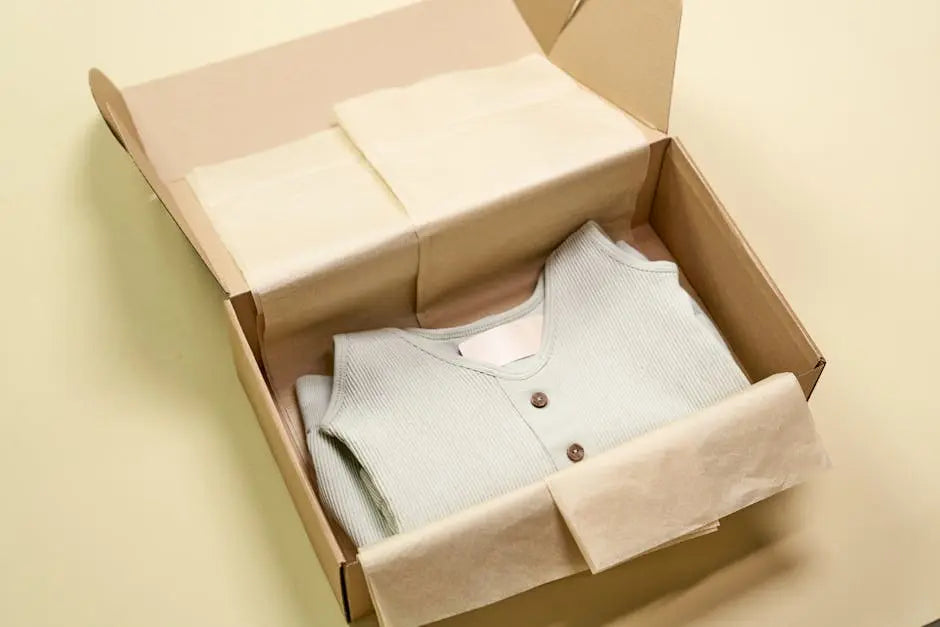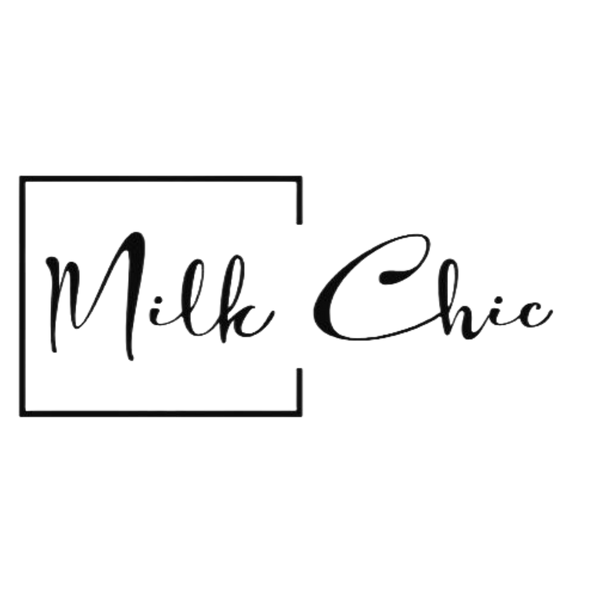
15 Eco-Friendly Brands Revolutionizing Sustainable Fashion
Share
In a world where fast fashion continues to dominate the industry, eco-friendly brands are stepping up to offer sustainable alternatives that make a difference. These brands not only prioritize the environment, but also advocate for ethical practices, ensuring that the fashion we wear doesn’t come at the cost of our planet. Join us as we explore 15 remarkable brands that are transforming the landscape of sustainable fashion. Shop our Ecochic
1. A Leader in Sustainable Materials
One of the most prominent names in the sustainable fashion arena is Patagonia. With a commitment to using recycled materials, Patagonia has set a high standard in the industry. The brand not only produces high-quality outdoor apparel but also advocates for environmental protection. Their ‘Worn Wear’ program encourages customers to repair and reuse their gear, which significantly reduces waste. This commitment to sustainability is evident in every stitch of their products, making Patagonia a true leader in eco-friendly materials.
Another brand making waves in this space is Stella McCartney. Known for her cruelty-free approach, McCartney utilizes innovative materials like organic cotton and recycled polyester. Her designs are not only chic but also come with a conscience. By refusing to use leather or fur, she’s redefining luxury fashion and showcasing that it’s possible to create beautiful pieces without harming the environment.
2. Ethically Sourced and Fair Trade Practices
The importance of ethical sourcing in sustainable fashion cannot be overstated. Brands like People Tree are pioneers in this movement, ensuring that every garment is produced under fair trade practices. By working closely with Fair Trade certified co-operatives, they not only provide fair wages but also empower communities. This model not only uplifts the artisans but also serves as a benchmark for ethical fashion.
Similarly, Eileen Fisher takes a holistic approach to sustainability, emphasizing organic and responsibly sourced materials. Their commitment extends beyond just clothing; they invest in fair labor practices, ensuring every person involved in their supply chain is treated with dignity. This philosophy resonates with consumers who prioritize not just the garment, but also the story behind it.
3. The Power of Upcycled Fashion
In recent years, upcycled fashion has emerged as a powerful force in the sustainable fashion landscape. Brands like Reformation are at the forefront, turning discarded materials into trendy, stylish clothing. Each piece tells a story of transformation, showcasing how fashion can innovate while respecting the planet. Their dedication to reducing waste is commendable, as they strive to make sustainable fashion appealing to the mainstream consumer.
Moreover, brands such as Elvis & Kresse take upcycling to the next level by repurposing industrial waste into luxury accessories. Their story is particularly inspiring: every item is handcrafted from discarded fire hoses, rescuing them from landfills while supporting firefighters. This kind of creativity not only celebrates sustainability but pushes the boundaries of design, making upcycled fashion the new wave of innovative style.
Upcycling also encourages consumers to rethink their own consumption habits. As brands derive inspiration from previously discarded materials, we are reminded that fashion can circulate, renew, and evolve. This shift in mindset is crucial for fostering a more sustainable future.
4. Fashion That Gives Back to Communities
Sustainable fashion is not just about the environment; it’s also about making a positive impact on communities. Brands like TOMS have effectively integrated social responsibility into their business model. Their one-for-one giving program means that for every pair of shoes sold, a pair is donated to someone in need. TOMS has shown that fashion can be a powerful tool for good, proving that every purchase can give back to the community.
Another brand making an impact is Warby Parker. While primarily known for eyewear, their approach towards providing affordable glasses aligns with the ethos of giving back. Their ‘Buy a Pair, Give a Pair’ program highlights how companies can merge social good with business success, reshaping the way we think about consumerism in the fashion industry.
5. Innovative Use of Sustainable Fabrics
Sustainable fabrics are revolutionizing the way we view clothing production. Companies like Amour Vert have mastered the art of using sustainable materials such as Tencel and organic cotton, which not only reduce environmental impact but also feel luxurious against the skin. Their commitment to minimal waste means that every piece they produce is designed with quality and sustainability in mind. By pushing the boundaries of traditional textiles, they inspire consumers to choose responsible, eco-friendly options.
In addition, brands are increasingly exploring the use of innovative fabrics derived from nature. An example is orange fiber, made from the by-products of the citrus juice industry. This unique material offers a fresh alternative to conventional textiles, proving that sustainability can be both practical and elegant.
6. Transparency in the Supply Chain
As consumers become more conscious of their purchases, transparency in the supply chain has become non-negotiable. Brands like Everlane are leading the charge by openly sharing the costs of production, including materials and labor, with their customers. This radical approach builds trust and allows consumers to make informed choices about where their clothes are coming from. It sets a precedent for accountability that other brands are starting to follow.
In an industry often shrouded in secrets, transparency is refreshing. By shedding light on their practices, brands not only gain customer loyalty but also force competitors to rethink how they operate. It fosters a culture of openness that aligns perfectly with the values of sustainability and ethical responsibility.
7. Completely Biodegradable Collections
Imagine a fashion line that leaves no trace on the earth after its lifecycle. Brands like MUD Jeans are making this a reality by producing 100% biodegradable denim. Their commitment to sustainability extends beyond just manufacturing; they also promote a circular economy where customers can return their jeans for recycling. This innovative approach emphasizes the importance of waste reduction in fashion and showcases a new standard for eco-friendly practices.
Additionally, brands focusing on biodegradable materials create garments with the end in mind. By utilizing fabrics that naturally decompose, they ensure that the fashion they produce has a positive impact - even when it’s time to say goodbye. This revolutionary shift is leading to a new era, where fashion respects both style and the environment.
8. Supporting Local Artisans
Sustainable fashion also means supporting local artisans and preserving traditional crafts. Brands like Ten Thousand Villages showcase the talents of artisans around the globe, creating opportunities and fair wages through their fair trade practices. Each product tells a story, connecting consumers with the people behind the item and fostering cultural appreciation.
This approach not only supports local economies but also engenders a sense of respect for craftsmanship and heritage. In an age where mass production dominates, these brands remind us of the beauty and significance of handmade goods.
9. Stylish Yet Sustainable Footwear
When it comes to footwear, brands like Allbirds are setting an incredible example. The company focuses on using renewable materials like merino wool and eucalyptus tree fibers. This results in shoes that aren’t just comfortable and stylish, but also environmentally friendly. Allbirds has achieved a perfect balance between fashion and function, proving that sustainability doesn’t have to sacrifice aesthetics.
Furthermore, the footwear industry is evolving to incorporate sustainable practices. Companies are exploring vegan leathers and bio-based materials to create stylish shoes that tread lightly on the earth. This growing trend is crucial in a world where consumers are increasingly looking for responsible options that align with their values.
10. Revolutionizing Activewear with Eco-Friendly Practices
Activewear is often seen as a gray area when it comes to sustainability, but brands like Girlfriend Collective are breaking the mold. Their compression leggings and activewear are made from recycled plastic bottles, turning waste into high-performance apparel. This shift not only promotes sustainability but also encourages consumers to reconsider their own purchasing choices.
Moreover, their size-inclusive approach ensures that all bodies are represented, creating a community around inclusivity and empowerment. By pairing sustainability with social responsibility, Girlfriend Collective is paving the way for a future where activewear aligns with mindful living.
11. Timeless Designs with Minimal Impact
Timeless design is at the heart of sustainable fashion. Brands like Reiss encapsulate this philosophy by creating classic pieces that transcend seasonal trends. Their focus on quality over quantity leads to garments that stand the test of time, saving consumers from the cycle of fast fashion.
This approach not only reduces waste but also encourages a more mindful consumption pattern. By investing in timeless pieces, consumers can cultivate wardrobes filled with high-quality, long-lasting garments that reflect their personal style while contributing to sustainability.
12. Vibrant Colors Without the Chemicals
Sustainable fashion doesn’t have to be dull! Brands like Nuuwaï are proving that vibrant colors can be achieved without harmful chemicals. By using natural dyes and sustainable methods, they offer a diverse array of hues, allowing consumers to express their style without compromising their eco-values.
This innovation also opens the door for a broader discussion on the impact of traditional dyeing processes on the environment. As more brands explore natural alternatives, they pave the way for a future where fashion is not only expressive but also aligns with environmental responsibility.
13. Customizable Fashion with a Purpose
In a world moving towards personalization, brands like Unmade are leading the way with customizable fashion. Consumers can design their own pieces, selecting everything from fabric to patterns, resulting in garments that are tailored to their individual taste. This level of customization not only empowers consumers but also reduces waste, as each item created is unique and precisely what the buyer desires.
Such innovations encourage a deeper connection between consumers and their clothing, fostering a relationship that celebrates both individuality and sustainability. By promoting slower, more mindful purchasing habits, customizable fashion is a powerful force for positive change in the industry.
14. Regularly Updating Collections for Less Waste
In a rapidly changing fashion landscape, brands that regularly update their collections, like ASOS’s responsible range, focus on reducing waste and promoting sustainability. Their commitment to rethinking styles reflects a growing recognition that fashion should not be disposable. By updating their offerings with a conscious mindset, they showcase a model where fashion can respond to trends while also respecting the planet.
This strategy encourages consumers to be mindful of their choices, inviting them to invest in pieces that resonate more with sustainability rather than fleeting trends. Collectively, these brands are changing the narrative around how we approach fashion and waste.
15. Pioneering Circular Fashion Models
Pioneering circular fashion models are reshaping the industry, with brands like Loop Fashion leading the way by creating garments designed to be reused, refurbished, or recycled. Their holistic approach focuses on the end of a garment’s life, providing solutions that encourage responsible disposal and recycling.
This concept of circularity not only minimizes waste but also invites consumers to rethink their relationship with clothing. By participating in a circular fashion economy, consumers are empowered to make choices that align their purchasing power with sustainable practices, fostering an essential shift in the industry.
As we observe these brands push the boundaries of what’s possible within sustainable fashion, it becomes clear that the future of the industry holds exciting possibilities for both consumers and the planet alike.

